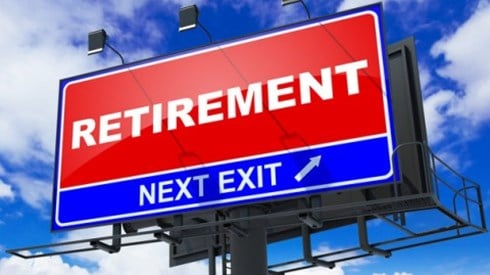Business Risk and the Captive Insurance Company

John Talley , Alan B. Cantor | July 26, 2021

Any business owner knows that business risk is the antithesis of a profitable business. Business risk is the exposure a company or organization has that will lower its profits or lead it to fail. It is a sound business practice to adopt internal procedures to manage (eliminate or mitigate) these risks. However, the business owner will be obliged to pay losses that arise from those risks (self-insure). Alternatively, the owner may wish to transfer that risk and the obligation to pay any losses arising from the risk to a third party. These third parties have traditionally been commercial insurance companies that insure other business entities with similar risks.
Many business owners are now challenging the conventional method of financing their business risk. CEOs and operating officers of the company are expressing dissatisfaction with their risk management program for one of two reasons: (1) their risk management program protocols are not performing as expected, and (2) the costs of risk management are going through the roof. Those risks are not being maintained at reasonable cost levels attributable to the insurance that they have. With the extended hard insurance market that we are experiencing, commercial insurance premiums will continue to be more expensive. Many companies are searching right now for ways to bring risk management and financing costs down because they are hurting their bottom line.
For those business owners who have an appetite for self-insuring their company's risks, forming a captive insurance company will be a useful tool in their risk management process. In simple terms, a captive is a company created by the parent organization to insure its risks and those of any affiliated entity. A captive is different from a traditional insurance company in that the insured is also the owner of the insurance company. In that respect, a captive is a form of self-insurance. Like a commercial insurance company, a captive is an insurance company, subject to domicile statutes and regulations.
The core purpose of a captive should be utilized as a tool to aid in the financing of its owner's risk and to become an essential part of the overall risk management plan. It gives more risk management and financial control to the captive owner/policyholder than the traditional commercial insurer-insured relationship.
Most prospective captive owners seek to pay less than the premiums historically paid to a commercial insurer. If the owner's claims decline through effective risk management protocols, the premiums for the insurance coverage should decline also.
With a commercial insurer, the owner who is effectively managing their business risk may be funding the claims for owners who are poorly managing their losses. By using a captive, only the owner's risk will be underwritten. This can stabilize the cost of insurance in the future.
If the owner's business has a good risk management program and a low claims history, the cost of financing a particular risk can be much lower than a corresponding commercial coverage. Additionally, the captive owner controls the operating expenses and the profit component of the premium, which factors into the development of premium cost. The captive owner can make use of a lower overhead expense ratio than most commercial insurers and reduce or eliminate the profit component of the calculation.
In addition to lowering the overall cost of risk financing, a captive offers the following.
- It can tailor the specific language of the policy to cover previously commercially unavailable coverage. Most domicile statutes allow a captive to develop its own policy language, taking into consideration the specific risks of the owner. This will allow the captive insurance company to offer coverage that may not exist in the commercial insurance industry.
- It allows the owner/insured to control its claims process. A commercial insurer controls the claims process, from appointing a claims adjuster to determining the law firm to defend a suit arising from the claim. Sometimes the insured may not feel that the outcome of the process is in its best interest. With a captive insurer, the owner/insured controls the entire claims process.
- It can work with the commercial insurer rather than replacing the commercial coverage. Many businesses have commercial coverage that requires a deductible amount—the insured is required to pay an initial amount on a claim prior to the insurer paying the claim.
If optimized to its maximum potential, a captive insurance company can become the major tool in the business owner's risk management tool belt. Risk management encompasses the identification, analysis, and response to risk factors that affect the life and financial well-being of a business. The risk management process must continually be assessed, reviewed, and implemented. Continual analysis of the business loss data can provide valuable information about the company trends with their risks and loss expenses. This analysis can determine the pattern of the risk losses and reserves for potential losses. However, rather than establishing a self-retention reserve in the company (thereby reducing company profit), the reserve is established in the captive, a normal procedure for an insurance company. As the business becomes aware of new risks, the analysis can help the business owner weigh whether to finance the risk through commercial channels, through its captive, or a combination of both.
A well-run captive can provide additional focus on an established risk management plan. As the risk management program identifies the key risks of the business, a captive can add the ingredient of estimating the amount of potential loss. This is done through the following.
- Preparing a detailed analysis of the risks that are optimal to retain in the captive
- Providing annual reviews of the business's risk management performance to help the business develop a risk strategy that better protects its assets
- Determining the reserves to hold in the captive, which produces an organization that keeps the business's risk management at the top of the mind of its owner
There are some risks with catastrophic results that are beyond the ability of the company to handle. As a business financing its risk through a commercial insurance company, the loss may blow through the maximum limit on the policy. However, the outcome could be vastly different with a captive insurance company. If the risks were financed through the captive, as an insurance company the captive can access the reinsurance market for additional risk coverage or catastrophic insurance. Alternatively, the captive could issue an excess policy to cover the excess loss over the commercial policy limit.
The ultimate goal of a captive is to aid the business in managing its risks and mitigating the potential losses. As the business's risk management profile changes, the captive can quickly provide coverage needed to facilitate the program. History has shown that commercial insurance companies are not capable of reacting to the rapid changes of the modern marketplace. Additionally, they have never been capable of insuring the multitude of hidden risks many businesses face. A good risk management protocol can incorporate both commercial and captive insurance.
A captive insurance company gives more financial control to the captive owner/policyholder than the traditional commercial insurer-insured relationship. If the owner's business has a good risk management program and a low claims history, the cost of financing a particular risk can be much lower than a corresponding commercial coverage. Additionally, the captive owner controls the operating expenses and the profit component of the premium, which factors into the development of premium cost. The captive owner can utilize a lower overhead expense ratio than most commercial insurers and lower or eliminate the profit component to the calculation.
The bottom line is that a captive may be the answer the CEOs and operating officers are seeking to control the costs of business risks and maximize profits.
John Talley , Alan B. Cantor | July 26, 2021




